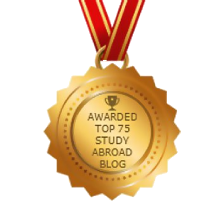Posted on July 07 2021
Australia immigration today: Migrations level plans for 2021-22
By , Editor
Updated September 26 2023
Here’s a brief look at the administration of Australia immigration and citizenship programs. We will also look at how migration program planning levels influence these programs.
Immigration is a central part of Australia’s national identity and economic strength. The benefits of social links created with people beyond the borders of Australia have benefitted the country immensely. Australia immigration programs contribute to the Australian Citizenship Program as well as operate alongside border and compliance operations. These operations support social cohesion, national security, the safety of the community, and economic prosperity.
Australia immigration has targeted programs that include permanent skilled/family visas, student/work visas, refugee and humanitarian visas, and temporary visitor visas.
Since the early 1970s, these programs have constituted a non-discriminatory, universal visa system. It has its focus on the contribution a person can make to Australia irrespective of their gender, ethnicity, or religion. Australia immigration program garners high levels of public support and social cohesion. The non-discriminatory immigration policies have played a huge part in creating that advantage.
The objectives of the administration of these programs include:
- facilitating the entry and stay of legitimate migrants who arrive to work, study, visit, get protection, or be reunited with family
- preventing the entry or stay of non-citizens trying to hide their true intentions and/or identity, as well as those who pose a risk to the safety of the Australian community or to the country’s overall interest
Australia’s Immigration Program is well-managed to anticipate and respond to changing circumstances in the national and international scene. Australia decides its Migration Program planning levels to achieve optimal social and economic outcomes.
Australia’s Migration Program planning levels
In 2021-22, the Migration Program is expected to have an overall planning level that comes to 160,000 places. The following streams will be acting as pathways to bring migrants to fill these places:
Skill: There are 79,600 places assigned to this stream. The stream is designed to better the Australian economy’s productive capacity and solve skill shortages in the labor market. This will include the ones in regional Australia.
Special Eligibility: There are 100 places assigned to this stream. The stream involves visas for individuals in special circumstances. This includes permanent residents coming back to Australia after staying overseas for a while.
Family: There are 77,300 places assigned to this stream. The stream has a predominantly inclusion of partner visas. This enables Australians to reunite with family members who are there overseas and offers them pathways to become Australian citizens.
Child: There are 3,000 places assigned to this stream. This stream is managed outside the Migration Program. The reason for this is that it’s demand-driven and no ceiling applies to them.
Here’s a table that shows the Migration Program planning levels for 2021-22.
| Stream and Category | Places in 2021-22 |
| Skill stream | |
| Employer Sponsored | 22,000 |
| Regional | 11,200 |
| Skilled Independent | 6,500 |
| State/Territory Nominated | 11,200 |
| Global Talent | 15,000 |
| Business Innovation & Investment Program | 13,500 |
| Distinguished Talent | 200 |
| Skill Total | 79,600 |
| Family Stream | |
| Parent | 4,500 |
| Partner | 72,300 |
| Other Family | 500 |
| Family Total | 77,300 |
| Child (an estimate; no ceiling applied) | 3,000 |
| Special Eligibility | 100 |
| Total | 160,000 |
FAQs
Why haven’t the Migration Program planning levels changed in 2021-22?
- The Migration Program for 2021-22 will retain the policy settings implemented for the 2020-21 program year. This includes a ceiling plan of 160,000 places. This is to build on the success of Australia in the management of the impacts of COVID-19. The aim is also to maximize flexibility for an increase in migration. This will be in line with changing economic, health, and border conditions.
- The Minister for Immigration, Citizenship, Migrant Services, and Multicultural Affairs will keep on having the capability to redistribute places between visa categories under the Skill stream in response to economic, public health, and labor market requirements. This will make sure that migration to Australia stays able to respond to shifts in border restrictions and economic activity.
Will there be changes in other policy settings in the 2021-22 Migration Program?
No. The priorities, program settings, and planning levels established for the 2020-21 Migration Program will stay so in 2021-22. This is to give support to Australia’s ongoing recovery from the impacts of the COVID-19 pandemic.
However, the Minister for Immigration, Citizenship, Migrant Services, and Multicultural Affairs may use the authority to redistribute places between Skill stream categories of visas if needed.
Which visa categories will be prioritized in the Migration Program for 2021-22?
The Migration Program Skill stream in 2021-22 will keep its focus on categories of visa that will help in the resurgence of the Australian economy from the COVID-19 pandemic. The priority will be given to those that provide Australia with critical skills, jobs, and investment.
The 3 priority categories within the Skill stream of the 2021-22 Migration Program are:
- Global Talent Program
- Business Innovation and Investment Program
- Employer-Sponsored Program
The Partner visa category has been allocated the biggest share of places within the 2021-22 Migration Program Family stream. This recognizes the category’s strong contributions to Australia economically and demographically.
- Priority processing of onshore Partner visa applications will continue. This will help deliver greater certainty in employment for this group and stabilize NOM (Net Overseas Migration) through the retention of migrants in Australia.
- Applicants for Partner visas in regional areas (which means outside Melbourne, Brisbane, and greater Sydney) will also be prioritized to offer assistance in meeting shortages in labor and contribute to regional Australia’s economic recovery.
Will visa applicants already in Australia continue to be prioritized in 2021-22?
Yes.
Will the 2021-22 Migration Program settings affect my existing visa application?
No. Visa applications that have already been filed will continue to be processed as per timeframes for visa processing.
What occupations are being prioritized for processing?
The PMSOL (Priority Migration Skilled Occupation List) identifies 19 occupations that require those with critical skills needed to support the economic recovery of Australia from the COVID-19 pandemic. Visa applications that are sponsored by employers with a job on the PMSOL will be assigned processing on priority.
Those who are not citizens of Australia and working in critical sectors can also be prioritized for visa processing in other skilled visa categories. Temporary visa holders will be considered for travel exemptions to enter Australia.
These critical sectors include:
- specialist medical services
- the supply of essential goods and services
- the delivery of critical services for economic recovery
- critical skills in religious fields
What are the key sectors for the Global Talent Program?
- resources
- energy
- defense, advanced manufacturing, and space
- digitech
- financial services and fintech
- agri-food and agtech
- health industries
- circular economy
- Infrastructure and tourism
- education
If you found this blog engaging, you may also like…
Tags:
Australia Immigration
Share

